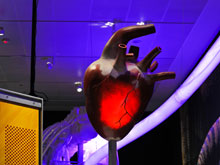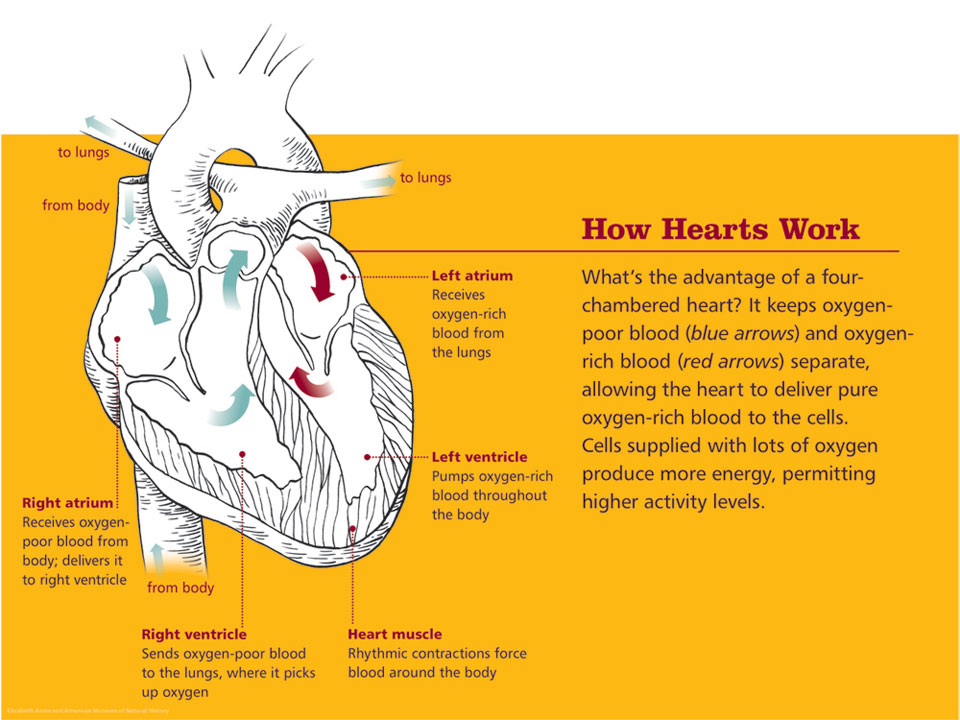Hearts
Part of the The World's Largest Dinosaurs exhibition.
Part of the The World's Largest Dinosaurs exhibition.

A heart is an amazing organ, whether beating in a hummingbird, a human or a sauropod. The bigger the animal, the bigger and more powerful this biological pump must be. But how big can a heart get? And how does the long sauropod neck complicate the heart's job?

No one has ever seen a sauropod heart. So how did scientists decide what it might have looked like? They studied the hearts of living animals like ostriches and crocodilians, which are closely related to sauropods such as Mamenchisaurus. Both crocs and birds have four-chambered hearts, so it is likely that Mamenchisaurus did, too.
Ever gotten dizzy when you stood up too fast? That means blood wasn't getting to your brain fast enough. What if you were a sauropod and you lifted your head? Your brain still needs blood, but how will your heart get it there? Giraffes have evolved some solutions--maybe sauropods had similar ones.
An intricate network of elastic-walled arterial vessels at the base of the skull acts as a safety valve, providing space for the extra volume of blood rushing to the head. It is called a rete mirabile (reet mihr-AH-bill-ay) or "wonderful net."
Veins are equipped with valves that keep blood from flowing backward under the pull of gravity. In humans, these valves can be faulty--but wearing tight elastic stockings can help. Giraffes have natural support stockings: very thick, inelastic skin in their legs.
A giraffe heart may weigh up to 25 pounds (11 kg)--not especially big for a giraffe-sized animal--but it is very thick-walled and muscular.